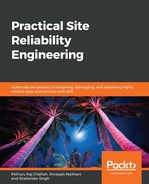Microservices are API-enabled, self-contained, loosely coupled, and fine-grained services. MSA represents a high-level architectural style for composing microservices-centric enterprise-grade applications. MSA is a direct and distinct off-shoot of the service oriented architecture (SOA) paradigm to surmount the various SOA drawbacks. Luminaries and pundits, based on their vast experiences with service-oriented enterprise, embedded, and cloud applications, have brought in this new paradigm, which is rapidly sweeping the whole IT industry. MSA brings forth a number of unique business technologies and user benefits. Business systems are greatly empowered to be flexible and extensible through the incorporation of the various MSA characteristics. MSA are typically business-centric to realize next-generation business applications in a configurable, customizable, and composable manner. MSA ultimately provides the relevant capability for the swift and risk-free realization of highly reliable enterprise-class applications. Generally, a microservices-based application isolates the various business functionalities into a collection of smaller and easily manageable services. Precisely speaking, microservices are independently deployable, horizontally scalable, interoperable, composable, publicly discoverable, network-accessible, and portable. Furthermore, with the steady maturity and stability of the DevOps concept and culture in worldwide enterprises, the MSA is bound to fulfil the long-standing goals of agile application design, development, and deployment in production environments.
Microservices make complex and large-scale application design, development, and deployment easier and faster. Essentially, MSA is a proven process of developing software applications as a suite of small and independent services in which each service runs a unique application functionality in an isolated process, and communicates through a well-defined and lightweight mechanism (REST APIs). Microservices team up with one another to fulfil quickly evolving business needs. MSA is the most appropriate architectural pattern for producing next-generation mobile, enterprise, embedded, connected, and cloud applications. Microservices can be business-specific as well as agnostic to succulently cater for varying demands. There are several open source and commercial-grade frameworks, toolsets, programming languages, and accelerators to design and build microservices.
There are a few service composition (orchestration and choreography) platforms to rapidly compose process-centric and business-aware microservices. There are API Gateway and management solutions to enable correct communication between disparate and distributed microservices, and there are several powerful DevOps tools to enable the continuous integration, delivery, and deployment of microservice based applications. At the end, the cool convergence between containers and microservices is to open a number of fresh opportunities and possibilities.
A key aspect of MSA is that each microservice can have its own life cycle. Different teams situated at geographically distributed locations can independently design, develop, deploy, and manage their respective microservices. The only constraint is that they have to maintain the API compatibility to support backward and forward compatibility. Each microservice is typically owned and operated by a team of architects, designers, developers, and deployers. This autonomy and agility, when combined with continuous integration, delivery, and deployment tools, enable new and refurbished applications to be deployed very frequently (that is, several times per day). Microservices are self-contained and hence autonomous. Due to the decoupling nature, the failure of one microservice does not impact the other microservices.
